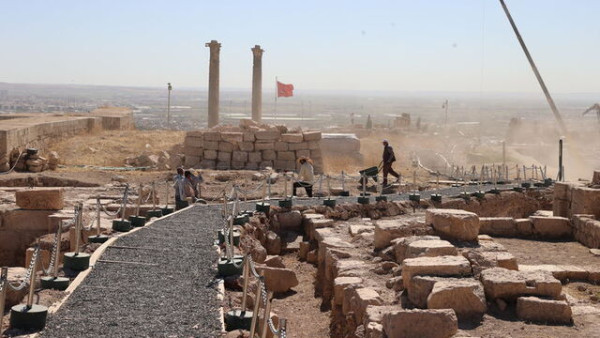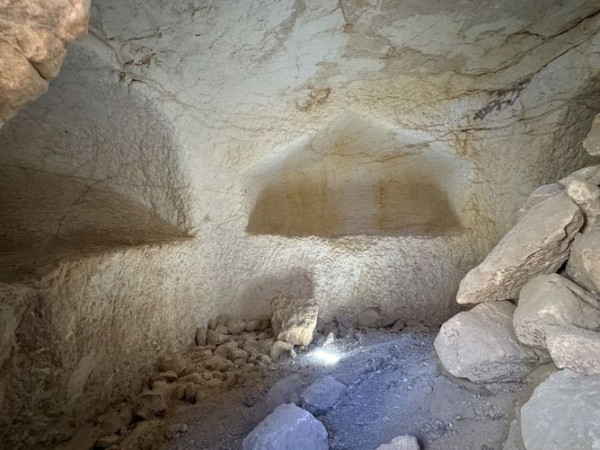
Credit: Anadolu Agency (AA)
Ishtartv.com – arkeonews.net
7 July 2025
A recent archaeological breakthrough in southeastern Turkey has stirred
excitement in the academic world. Deep within the inner citadel of Urfa Castle,
researchers have unearthed a mysterious rock-cut tomb — the first
ever discovered in this part of the fortress. Early findings suggest the tomb
may be linked to the ancient Kingdom of Osroene — also known as the Abgar
dynasty — raising the possibility of a royal burial site lost for centuries.
The discovery, led by Prof. Dr. Gülriz Kozbe and her team, marks a
significant moment in the ongoing exploration of Şanlıurfa’s layered
past — from Roman and Byzantine to Islamic and Ottoman eras.
A Forgotten Christian Kingdom at the Crossroads of Rome and Parthia
The Kingdom of Osroene, with its capital in Edessa (modern-day
Şanlıurfa), was a culturally rich and strategically important state that
thrived between the 2nd century BCE and the early 3rd century CE. Initially
emerging as a semi-independent kingdom during the decline of the Seleucid
Empire, Osroene was generally allied with the Parthian Empire, benefiting from
its position along the key trade routes of Mesopotamia.
Despite its Parthian ties, Osroene gradually came under increasing Roman
influence. In 114 CE, it was absorbed into the Roman Empire as a
semi-autonomous vassal state, maintaining a degree of internal autonomy. A
century later, in 214 CE, it was officially incorporated into the empire as a
standard Roman province, ending its royal lineage.
Osroene is especially notable for being among the first states to adopt
Christianity as a ruling faith. Its royal family, the Abgars, are closely
associated with early Christian traditions, including legendary correspondence
with Jesus of Nazareth, as recorded in apocryphal sources. The kingdom became a
major center for Syriac Christianity, leaving a deep cultural and religious
imprint on the region.
Rare Rock-Cut Tomb Could Reveal Royal Secrets
Though rock-cut tombs are common across the region, this is the first to
be found within Urfa Castle’s inner walls. The tomb’s features — including a
sealed circular stone entrance and a Syriac inscription — suggest a high-status
burial.
Prof. Kozbe emphasized that the tomb likely dates back to the Late
Antiquity period, between the 3rd and 8th centuries CE, based on architectural
features and regional burial traditions. However, if the tomb is indeed
connected to the Abgar dynasty of Osroene, the date could be pushed further
back.
“If this tomb truly belongs to the Abgar royal family, it may date as
early as the 3rd century,” she noted. “At this stage, we can generally place it
between the 3rd and 8th centuries. Only after examining the interior —
especially if we uncover mosaics, inscriptions, or grave goods — can we
establish a more precise chronology.
“If this tomb does indeed belong to a member of the Osroene royal
family, it could reshape our understanding of the region’s transition from
paganism to Christianity,” said Prof. Kozbe.
Further exploration is underway to access the interior and uncover
potential mosaics, human remains, or additional inscriptions that could reveal
the tomb’s true identity.

Credit: Anadolu Agency (AA)

Though rock-cut tombs are common across the region, this is the first to be found within Urfa Castle’s inner walls. Credit: Anadolu Agency (AA)
|